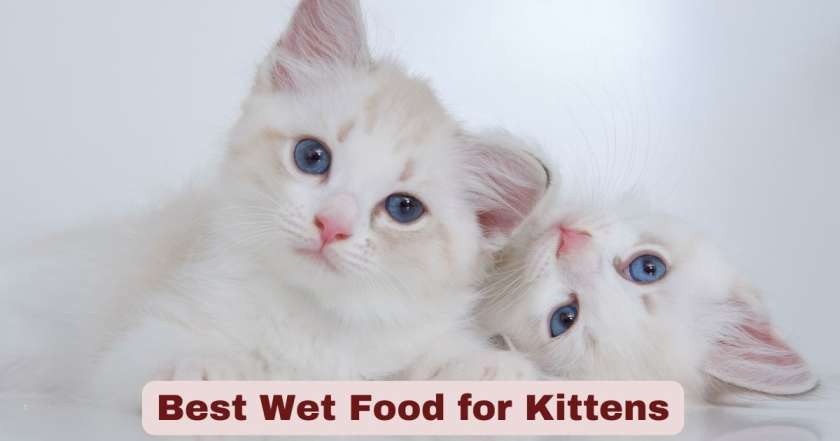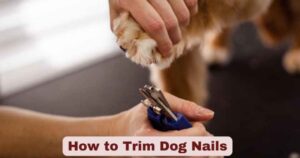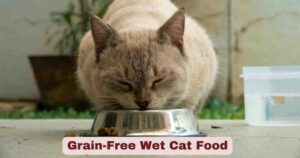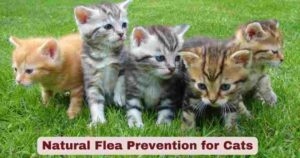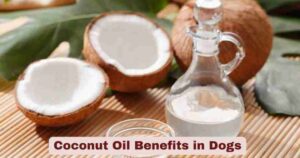Welcoming a new kitten into your home brings immense joy, but it also comes with the responsibility of providing proper nutrition during their crucial developmental months. Choosing the right wet food is one of the most important decisions you’ll make for your kitten’s health and well-being. Unlike adult cats, kittens have specific nutritional requirements that support their rapid growth, bone development, and immune system maturation.
Wet food offers numerous advantages over dry kibble for growing kittens, including higher moisture content, enhanced palatability, and easier digestion. The best wet food for kittens should contain high-quality proteins, essential fatty acids, and age-appropriate nutrient ratios that support healthy development. This comprehensive guide will help you navigate the complex world of kitten nutrition and make informed decisions about your furry friend’s diet.
1. Understanding Kitten Nutritional Needs
a) Growth and Development Requirements
Kittens require significantly more calories per pound of body weight than adult cats due to their rapid growth rate during the first year of life. During their first six months, kittens can triple their birth weight, making proper nutrition absolutely critical. Their bodies are developing complex systems including bones, muscles, organs, and their immune system.
The protein requirements for kittens are substantially higher than those for adult cats, with kittens needing at least 30% protein in their diet compared to 26% for adults. This increased protein demand supports muscle development, organ formation, and the production of antibodies that protect against disease. Additionally, kittens require higher levels of specific amino acids like taurine, which is essential for heart function and vision development.
b) Essential Nutrients for Optimal Health
Fat content in kitten food should be higher than adult formulations to provide concentrated energy and support brain development. The optimal fat content ranges from 9-15%, with emphasis on omega-3 and omega-6 fatty acids. These essential fatty acids contribute to cognitive development, immune function, and the development of a healthy, shiny coat.
Calcium and phosphorus ratios are particularly crucial during the kitten stage, as these minerals support proper bone and tooth development. The ideal calcium to phosphorus ratio should be approximately 1.2:1 to ensure proper skeletal formation without causing developmental orthopedic diseases. Vitamins A, D, E, and various B vitamins also play critical roles in supporting immune function, vision development, and metabolic processes.
2. Benefits of Wet Food for Kittens
a) Hydration and Moisture Content
Wet food provides essential hydration that kittens might not obtain from drinking water alone. Kittens, like adult cats, have a relatively low thirst drive and evolved from desert-dwelling ancestors. Wet food typically contains 70-80% moisture, which helps maintain proper kidney function and prevents urinary tract issues that can develop later in life.
Proper hydration supports numerous bodily functions including temperature regulation, joint lubrication, and toxin elimination through the kidneys. Kittens fed primarily wet food diets typically show better overall hydration status compared to those fed exclusively dry food. This improved hydration can contribute to better long-term health outcomes and reduced risk of kidney disease in adulthood.
b) Digestibility and Palatability
The texture and aroma of wet food make it more appealing to kittens, encouraging healthy eating habits from an early age. The soft texture is particularly beneficial for very young kittens who may still be transitioning from mother’s milk or are learning to eat solid food. The enhanced palatability ensures that even finicky eaters receive adequate nutrition during critical growth periods.
Wet food is generally more digestible than dry kibble due to its higher moisture content and softer texture. This improved digestibility means that kittens can more efficiently extract and utilize the nutrients from their food, supporting optimal growth and development. The easier digestion also reduces the likelihood of gastrointestinal upset, which can be common when introducing new foods to young kittens.
3. Key Ingredients to Look For
a) High-Quality Protein Sources
The first ingredient in any quality kitten wet food should be a named animal protein source such as chicken, turkey, salmon, or beef. These whole meat proteins provide the complete amino acid profile that kittens need for proper muscle development and overall growth. Avoid foods that list generic terms like “meat by-products” or “poultry meal” as primary ingredients, as these may be lower quality protein sources.
Multiple protein sources can be beneficial, providing a varied amino acid profile and reducing the risk of food sensitivities developing over time. Look for foods that include organ meats like liver or heart, which are nutrient-dense and provide essential vitamins and minerals that support kitten development. These organ meats are particularly rich in taurine, an amino acid that cats cannot synthesize on their own.
b) Beneficial Additives and Supplements
Prebiotics and probiotics support healthy digestive function and immune system development in growing kittens. These beneficial bacteria help establish a healthy gut microbiome, which plays a crucial role in nutrient absorption and disease resistance. Look for ingredients like chicory root, dried fermentation products, or specific probiotic strains listed on the label.
DHA (docosahexaenoic acid) is an omega-3 fatty acid that supports brain and eye development in kittens. Foods enriched with DHA, often derived from fish oil or algae sources, can contribute to improved cognitive function and visual acuity. Antioxidants like vitamin E and vitamin C help support the developing immune system and protect against cellular damage from free radicals.
4. Ingredients to Avoid
a) Harmful Additives and Fillers
Artificial colors, flavors, and preservatives should be avoided in kitten food as they provide no nutritional benefit and may cause digestive upset or allergic reactions. Common artificial preservatives like BHA, BHT, and ethoxyquin have been linked to health concerns and are unnecessary when natural preservation methods are available.
Excessive carbohydrates from sources like corn, wheat, or soy can be problematic for kittens, as cats are obligate carnivores with limited ability to process plant-based ingredients efficiently. While small amounts of carbohydrates are acceptable, they should not comprise the majority of the food’s composition. High-carbohydrate diets can contribute to obesity and diabetes later in life.
b) Low-Quality Protein Sources
Avoid foods that rely heavily on plant-based proteins like corn gluten meal or soy protein isolate as primary protein sources. While these ingredients may boost the overall protein percentage on the label, they don’t provide the complete amino acid profile that kittens need from animal-based proteins. These plant proteins are also less digestible for cats.
Generic meat meals or by-products can vary significantly in quality and nutritional value. Foods that specify the source of their meal, such as “chicken meal” rather than just “poultry meal,” are generally more reliable choices. By-products aren’t necessarily harmful, but the quality can be inconsistent, and higher-quality whole meat sources are preferable when possible.
5. Age-Appropriate Feeding Guidelines
a) Feeding Schedule for Different Ages
Kittens under 12 weeks old should be fed small, frequent meals throughout the day, typically 4-6 times daily. Their small stomachs cannot accommodate large meals, and frequent feeding helps maintain stable blood sugar levels and supports consistent growth. As kittens grow, the frequency can be gradually reduced while increasing portion sizes.
Between 3-6 months of age, kittens can transition to 3-4 meals per day, while maintaining the same high-quality kitten formula. After 6 months, most kittens can be fed twice daily, though some may benefit from three smaller meals if they tend to eat too quickly or experience digestive upset. The transition to adult feeding schedules should be gradual and based on the individual kitten’s needs and development.
b) Portion Control and Weight Management
Proper portion control is essential to prevent overfeeding while ensuring adequate nutrition for growth. Most kitten wet food labels provide feeding guidelines based on age and weight, but these should be considered starting points rather than absolute requirements. Individual kittens may need more or less food depending on their activity level, metabolism, and growth rate.
Monitor your kitten’s body condition regularly by feeling for their ribs and observing their waist when viewed from above. A healthy kitten should have a slight waist tuck and ribs that can be felt but not seen. Rapid weight gain or loss should be discussed with a veterinarian, as both can indicate underlying health issues or inappropriate feeding practices.
6. Top Features to Consider When Choosing
a) Life Stage Appropriateness
Always choose foods specifically formulated for kittens or “all life stages” that meet kitten nutritional requirements. Adult cat foods do not provide the concentrated nutrition that growing kittens need and can lead to developmental problems if used as the primary diet. Look for AAFCO (Association of American Feed Control Officials) statements confirming the food is appropriate for kitten growth and development.
Some premium brands offer foods formulated for specific kitten ages, such as foods designed for kittens under 4 months versus older kittens. These age-specific formulations can provide more targeted nutrition but aren’t necessary if a high-quality general kitten food is being used. The most important factor is ensuring the food meets the elevated nutritional requirements of growing kittens.
b) Brand Reputation and Quality Control
Research the manufacturer’s reputation, recall history, and quality control practices before selecting a kitten food. Companies with strong quality control measures, transparent ingredient sourcing, and good safety records are more likely to produce consistent, safe products. Look for brands that conduct feeding trials and employ veterinary nutritionists in their product development.
Consider the availability and consistency of the chosen food in your area. Frequent diet changes can cause digestive upset in kittens, so selecting a food that’s readily available ensures consistent nutrition throughout the growth period. Premium brands may cost more initially but often provide better nutrition per serving and may result in lower overall feeding costs.
7. Transitioning to Wet Food
a) Gradual Introduction Methods
When transitioning a kitten to a new wet food, the process should be gradual over 7-10 days to prevent digestive upset. Start by mixing small amounts of the new food with the current food, gradually increasing the proportion of new food while decreasing the old food. This slow transition allows the kitten’s digestive system to adapt to the new ingredients and textures.
Begin with a ratio of 25% new food to 75% current food for the first 2-3 days, then progress to 50/50 for another 2-3 days, followed by 75% new food to 25% current food for 2-3 days before completely switching to the new food. Monitor your kitten closely during this transition period for any signs of digestive upset, including changes in appetite, stool consistency, or energy levels.
b) Managing Picky Eaters
Some kittens may be hesitant to try new wet foods, especially if they’ve become accustomed to a particular texture or flavor. Warming the food slightly can enhance its aroma and make it more appealing. Try offering small amounts of different flavors and textures to determine your kitten’s preferences, but avoid offering too many options simultaneously, which can create finicky eating habits.
Adding a small amount of low-sodium chicken broth or the juice from canned tuna can make wet food more enticing for reluctant eaters. However, these additions should be temporary and used sparingly to avoid creating dependency on flavor enhancers. If a kitten consistently refuses to eat, consult with a veterinarian to rule out underlying health issues.
8. Common Feeding Mistakes to Avoid
a) Overfeeding and Free-Feeding Issues
Free-feeding wet food is not recommended due to food safety concerns and the difficulty in monitoring intake. Wet food can spoil quickly at room temperature, potentially causing foodborne illness. Additionally, free-feeding makes it challenging to track how much your kitten is eating, which is important for monitoring growth and health.
Overfeeding is a common mistake that can lead to rapid weight gain and potential health problems. Kittens should maintain steady, gradual weight gain rather than rapid increases that can stress developing joints and organs. Use measuring cups or a kitchen scale to ensure accurate portion sizes, and adjust feeding amounts based on your kitten’s body condition and growth rate.
b) Inconsistent Feeding Schedules
Maintaining consistent meal times helps establish routine and supports healthy digestion in kittens. Irregular feeding schedules can lead to overeating when food is available and may contribute to behavioral issues. Kittens thrive on routine, and consistent feeding times can also help with house training and general behavioral management.
Skipping meals or providing irregular access to food can cause blood sugar fluctuations, which are particularly problematic for young kittens. Consistent feeding schedules also make it easier to monitor your kitten’s appetite and identify potential health issues early. If schedule changes are necessary, implement them gradually to minimize stress and digestive disruption.
9. Special Dietary Considerations
a) Food Allergies and Sensitivities
While food allergies are relatively uncommon in kittens, some may develop sensitivities to specific proteins or ingredients. Common signs of food sensitivities include digestive upset, skin irritation, excessive scratching, or changes in coat quality. If you suspect a food sensitivity, work with your veterinarian to identify the problematic ingredient and select an appropriate alternative.
Limited ingredient diets or novel protein sources may be recommended for kittens with confirmed food sensitivities. These specialized diets should only be used under veterinary guidance to ensure they still meet the nutritional requirements for growing kittens. Hypoallergenic or prescription diets may be necessary in severe cases, but most kittens can thrive on high-quality commercial kitten foods.
b) Medical Conditions Affecting Diet
Kittens with certain medical conditions may require specialized dietary management in addition to standard veterinary treatment. Conditions such as inflammatory bowel disease, kidney problems, or diabetes may necessitate specific dietary modifications. Always work closely with your veterinarian to develop an appropriate feeding plan for kittens with health issues.
Some medications can affect appetite or nutrient absorption, requiring adjustments to feeding practices or food selection. Regular veterinary check-ups during the kitten stage help identify potential health issues early and ensure that dietary needs are being met appropriately. Never make significant dietary changes for a kitten with health issues without veterinary consultation.
10. Budget-Friendly Options Without Compromising Quality
a) Finding Value in Premium Foods
While premium kitten foods may have higher upfront costs, they often provide better nutrition per serving and may result in lower overall feeding costs. Higher-quality foods typically have better digestibility, meaning kittens need smaller portions to meet their nutritional needs. This improved efficiency can offset the higher per-can cost over time.
Look for sales, bulk purchasing options, or subscription services that may offer discounts on premium kitten foods. Many pet stores offer loyalty programs or frequent buyer discounts that can make high-quality foods more affordable. Online retailers often provide competitive pricing and convenient delivery options for kitten food purchases.
b) Supplementing with Homemade Options
While commercial kitten foods should form the foundation of your kitten’s diet, occasional supplementation with appropriate homemade ingredients can provide variety and additional nutrition. Small amounts of cooked chicken, fish, or egg can be offered as treats or meal toppers, but should not exceed 10% of the total daily caloric intake.
Homemade kitten food is not recommended as a primary diet unless formulated by a veterinary nutritionist, as it’s extremely difficult to achieve proper nutrient balance for growing kittens. Commercial foods undergo extensive testing and formulation to meet specific nutritional requirements that are challenging to replicate in home kitchens. If you’re interested in preparing homemade meals, consult with a veterinary nutritionist to develop appropriate recipes.
Conclusion
Selecting the best wet food for kittens requires careful consideration of nutritional content, ingredient quality, and your individual kitten’s needs. The foundation of good kitten nutrition lies in choosing age-appropriate foods with high-quality animal proteins, appropriate fat levels, and essential nutrients that support healthy growth and development. Remember that the most expensive food isn’t always the best choice, but investing in quality nutrition during the kitten stage can contribute to lifelong health and well-being.
Successful kitten feeding involves more than just selecting the right food – it requires consistent feeding schedules, appropriate portion control, and ongoing monitoring of your kitten’s growth and health. Regular veterinary check-ups, attention to your kitten’s individual preferences and needs, and patience during dietary transitions all contribute to establishing healthy eating habits that will benefit your cat throughout their life.
The journey of raising a healthy kitten is rewarding, and proper nutrition forms the cornerstone of that success. By understanding the principles outlined in this guide and working closely with your veterinarian, you can provide your kitten with the nutritional foundation they need to grow into a healthy, happy adult cat. Remember that every kitten is unique, and what works best for one may not be ideal for another – stay observant, flexible, and committed to providing the best possible nutrition for your feline companion.

